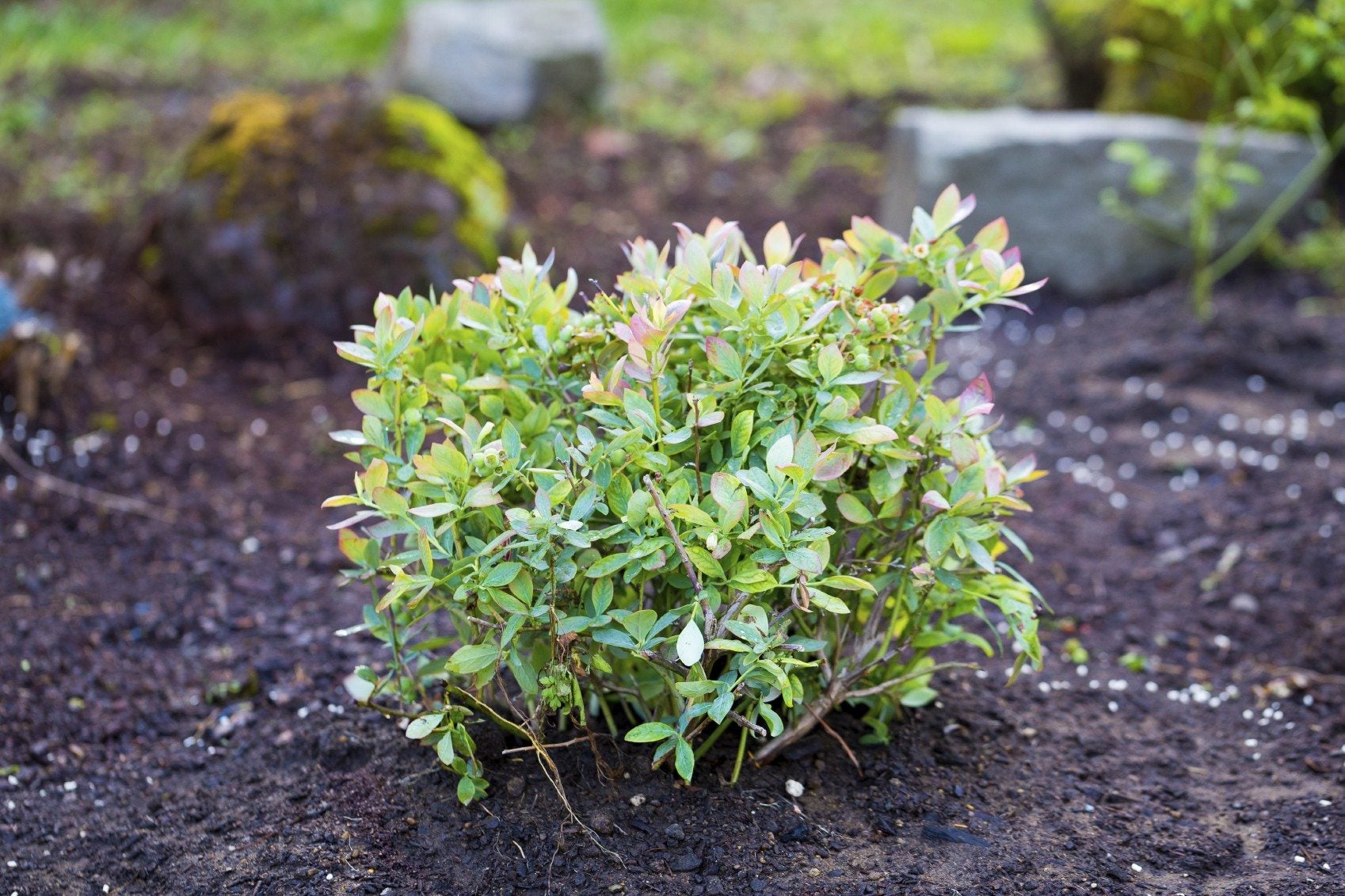Can You Transplant Blueberries: Tips For Transplanting Blueberry Bushes

Blueberries thrive in USDA zones 3-7 in full sun exposure and acidic soil. If you have a blueberry in your yard that isn’t thriving in its location or has become too large for the area, you might be wondering if you can transplant blueberries. Yes, you can easily transplant blueberries!
There are, however, a few key steps to ensure success with transplanting blueberry bushes. The correct timing for blueberry plant transplanting is crucial as well. The following will walk you through when and how to transplant blueberry bushes.
When to Transplant Blueberries
Blueberry plant transplanting should take place when the plant is dormant. This depends upon your location, generally from early November to early March after the worst of the frost has passed.
A quick light frost probably won’t hurt the plant, but extended freezes will. Blueberries can also be transplanted early in the fall after the first frost, again, when they are dormant. Dormancy is indicated when the plant has gone through leaf drop and no active growth is evident.
How to Transplant Blueberry Bushes
Blueberries like acidic soil with a pH of 4.2 to 5.0 and full sun. Choose a site in the garden with the appropriate soil pH or amend the soil with 1 cubic foot of peat moss and 1 cubic foot (28 L.) of un-limed sand.
Dig a hole 10-15 inches (25-28 cm.) deep, depending upon the size of your transplant. If possible, think ahead and add in some sawdust, composted pine bark, or peat moss to lower the soil pH in the fall before transplanting your blueberry bushes.
Now it’s time to dig up the blueberry you wish to transplant. Dig around the base of the bush, slowly loosening the plants roots. You probably won’t have to go down any deeper than a foot (30 cm.) to completely dig up the root ball. Ideally, you will transplant immediately, but if you can’t, wrap the root ball in a plastic bag to help it retain moisture.
Gardening tips, videos, info and more delivered right to your inbox!
Sign up for the Gardening Know How newsletter today and receive a free copy of our e-book "How to Grow Delicious Tomatoes".
Try to get the blueberry in the ground within the next 5 days. Transplant the blueberry in a hole that is 2-3 times wider than the bush and 2/3 as deep as the root ball. Space additional blueberries 5 feet (1.5 m.) apart. Fill in around the root ball with a mix of soil, and the peat moss/sand mix.
Tamp the soil in lightly around the base of the plant and thoroughly water the bush. Mulch around the plant with a 2- to 3-inch (5-7.5 cm.) layer of leaves, wood chips, sawdust or pine needles and leave at least 2 inches (5 cm.) free of mulch around the base of the plant.
Water the transplanted blueberries deeply once a week if there is little rainfall or every three days in hot, dry weather.

Amy Grant has been gardening for 30 years and writing for 15. A professional chef and caterer, Amy's area of expertise is culinary gardening.
-
 Looking For Plants To Give You The Soft And Fuzzies? Try These 5 Fuzzy Leaf Plant Options
Looking For Plants To Give You The Soft And Fuzzies? Try These 5 Fuzzy Leaf Plant OptionsLovers of texture, drama, silver foliage and tactile plants will adore these special sensory garden additions. These fuzzy leaf plant options will leave you all aglow
By Susan Albert
-
 Get Ready For A Summer Of Hummers! Grow These Full Sun Hummingbird Plants and Flowers
Get Ready For A Summer Of Hummers! Grow These Full Sun Hummingbird Plants and FlowersIf you’re lucky enough to enjoy a sunny backyard, make sure you are maxing out on your pollinator opportunities and grow these full sun hummingbird plants and flowers
By Tonya Barnett